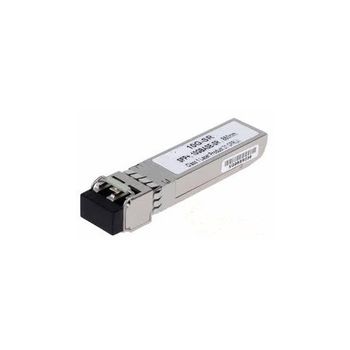Early Days of SFP
SFP transceivers were introduced in the early 2000s as a modular interface for connecting network devices to fibre optic or copper cabling. Their compact size, hot-swappable nature, and compatibility with a wide range of network standards made them a preferred choice for network engineers. The first-generation SFPs supported speeds of up to 1 Gbps, primarily used in Ethernet and Fibre Channel applications.
Introduction of SFP+
With the growing need for higher data rates, the SFP+ standard emerged, supporting speeds of up to 10 Gbps. SFP+ transceivers maintained the same physical dimensions as SFPs but offered significantly improved performance. This backward compatibility allowed network operators to upgrade their infrastructure without needing extensive hardware replacements.
The Rise of SFP28 and Beyond
As data demands continued to soar, SFP28 transceivers were developed to support 25 Gbps data rates, catering to more demanding applications like data centre interconnects and high-performance computing. This advancement was followed by the development of QSFP (Quad Small Form-factor Pluggable) modules, which could achieve even higher speeds by combining multiple SFP lanes into a single interface.
Latest Advancements in SFP Technology
SFP56: Pushing the Limits
One of the latest advancements in SFP technology is the SFP56 standard, designed to support 50 Gbps data rates over a single lane. SFP56 transceivers leverage advanced modulation techniques like PAM4 (Pulse Amplitude Modulation) to double the data rate compared to SFP28. This technology is particularly beneficial for high-density data centres and next-generation enterprise networks that require higher throughput without increasing port density.
DWDM and CWDM SFPs: Enhancing Optical Networks
Dense Wavelength Division Multiplexing (DWDM) and Coarse Wavelength Division Multiplexing (CWDM) SFPs have become pivotal in maximizing the capacity of optical fibre networks. These transceivers allow multiple data streams to be transmitted simultaneously over a single fibre by using different wavelengths of light. DWDM and CWDM SFPs enable efficient and scalable long-haul and metropolitan area networks, reducing the need for additional fibre infrastructure.
BiDi SFPs: Simplifying Connectivity
Bidirectional (BiDi) SFPs are another innovative development, enabling simultaneous transmission and reception of data over a single fibre. Traditional SFPs require two fibres for duplex communication, but BiDi SFPs use different wavelengths for upstream and downstream traffic on a single fibre. This advancement simplifies network cabling and reduces operational costs, particularly in access networks and data centres.
Tuneable SFPs: Flexibility in Optical Networks
Tuneable SFPs offer dynamic wavelength selection, allowing network operators to adjust the operating wavelength of the transceiver as needed. This flexibility is crucial in modern optical networks, where wavelength resources must be managed efficiently to accommodate varying traffic demands. Tuneable SFPs enhance network adaptability and optimize the utilization of optical spectrum, making them ideal for reconfigurable optical add-drop multiplexer (ROADM) systems.
Advanced Cooling and Power Efficiency
The latest SFP designs incorporate advanced cooling mechanisms and power-efficient technologies to address the thermal challenges associated with high-speed data transmission. Improved heat dissipation techniques, such as integrated heat sinks and optimized airflow designs, ensure reliable performance even in densely packed network environments. Additionally, advancements in semiconductor technology have led to more power-efficient SFPs, reducing operational costs and environmental impact.
The Future of SFP Technology
The future of SFP technology looks promising, with ongoing research and development focused on pushing the boundaries of speed, efficiency, and versatility. Emerging standards like SFP112, designed for 112 Gbps data rates, are on the horizon, promising to meet the ever-growing demands of data-intensive applications. Additionally, advancements in silicon photonics and optical integration are expected to further enhance the performance and capabilities of SFP transceivers.
Conclusion
From their humble beginnings to the latest high-speed innovations, SFP transceivers have revolutionized the networking landscape. The continuous evolution of SFP technology, driven by the need for higher data rates, improved efficiency, and greater versatility, ensures that these compact modules will remain a cornerstone of modern network infrastructure. As the demand for bandwidth and connectivity continues to grow, the latest advancements in SFP technology will play a crucial role in shaping the future of global networking.
At Fibre Technologies Ltd, we are committed to providing the latest and most advanced SFP solutions to meet your networking needs. Explore our comprehensive range of SFP transceivers, including the newest innovations, to enhance your network performance and efficiency.
Contact us today to learn more about how our cutting-edge SFP technology can transform your network infrastructure. Call us at 01344 752222 or email sales@fibre.co.uk to speak with our experts and find the perfect SFP solutions for your network.






